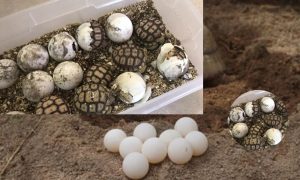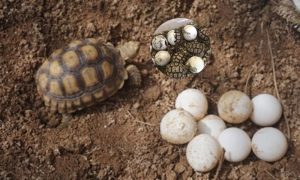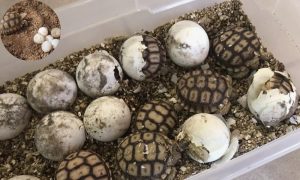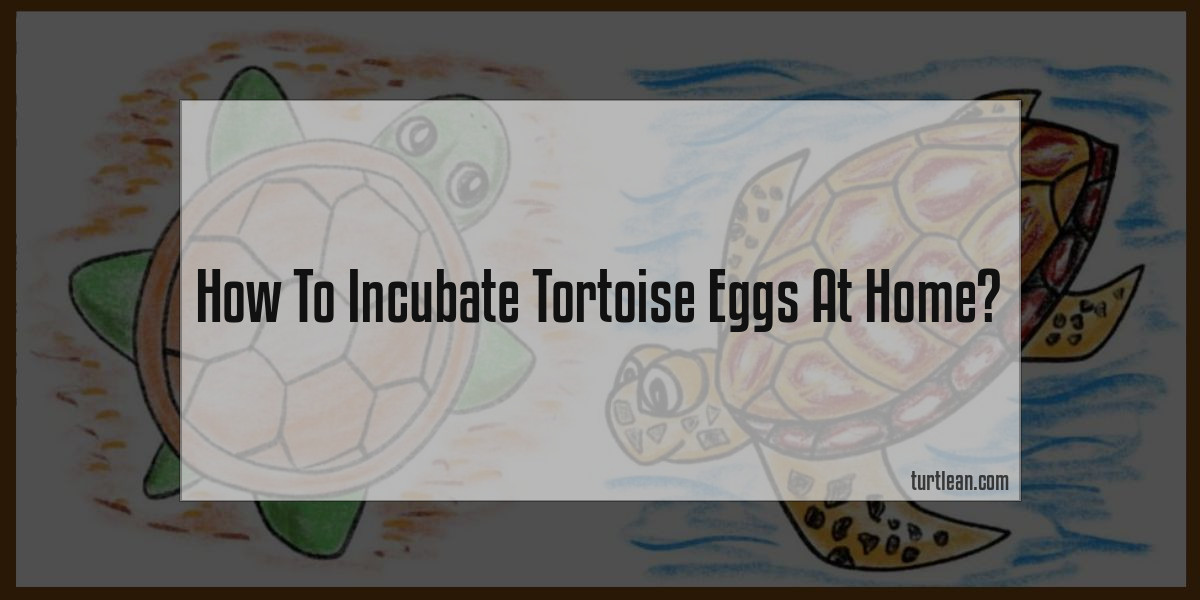Incubating tortoise eggs at home can be a rewarding experience. Tortoises are interesting and unique creatures, and their eggs are delicate and require special care. Here are some tips on how to incubate tortoise eggs at home:

1. Choose a suitable incubator. There are many different types of incubators available, so do some research to find one that will best meet your needs.
2. Fill the incubator with a substrate such as vermiculite or sand. The substrate should be moistened but not wet.
3. Place the eggs in the incubator and incubate at a temperature of around 29-31 degrees Celsius.
4. Keep the incubator clean and free of any mould or bacteria.
5. When the eggs hatch, the baby tortoises will need to be kept in a warm, humid environment. A vivarium or terrarium is ideal.
6. Give the tortoises plenty of time to grow and mature before releasing them into the wild.
By following these tips, you can successfully incubate tortoise eggs at home and give the baby tortoises a head start in life.
What Is The Best Way To Incubate Tortoise Eggs At Home?

If you’re looking to incubate tortoise eggs at home, there are a few things you’ll need to do to ensure they hatch successfully. First, you’ll need to find a suitable incubation container. This can be anything from a plastic tub to a commercial incubator, as long as it has good ventilation and can retain moisture. You’ll also need to create a substrate for the eggs to sit on. This can be something as simple as sand or vermiculite, which you can moisten with distilled water.
Once you have your incubation container set up, it’s time to add the eggs. Gently place them on the substrate, making sure they’re not touching each other. If you’re using a plastic tub, you can cover it with a lid or cling film to help retain moisture.
incubate the eggs at a consistent temperature of 26-28 degrees Celsius. You can use a reptile heat mat or bulb to achieve this. It’s also important to keep the eggs humid, so mist them with distilled water every few days.
The incubation period for tortoise eggs is around 90 days, so it’s important to be patient! Keep an eye on the eggs during this time, and if any start to mould, remove them from the incubator.
Once the eggs have hatched, you’ll need to provide the baby tortoises with a suitable habitat. This should include a warm basking area, a hiding spot and access to fresh water. You’ll also need to feed them a diet of leafy greens and vegetables.
Congratulations, you’ve successfully incubated tortoise eggs at home!
How Long Does It Take To Incubate Tortoise Eggs At Home?
Tortoise eggs take anywhere from 50 to 120 days to hatch, depending on the species of tortoise. The incubation temperature also plays a role in how long it takes for the eggs to hatch. For example, desert tortoise eggs incubate best at 86-88 degrees Fahrenheit, while gopher tortoise eggs need to be incubated at a slightly lower temperature of 84-86 degrees Fahrenheit.
To incubate tortoise eggs at home, you will need an incubator and a thermometer to monitor the temperature. You will also need to turn the eggs every few days to prevent them from sticking to the incubator walls.
Once the eggs have hatched, you will need to provide the baby tortoises with a warm, humid environment until they are old enough to be moved to a more arid climate. A 10-gallon aquarium with a heat lamp and a humidifier will work well for this.

What Temperature Should I Incubate Tortoise Eggs At Home?
Tortoise eggs need to be kept at a temperature between 85 and 95 degrees Fahrenheit. You can use a basking lamp to raise the temperature of the incubator, or you can place the eggs on a heat mat. If you are using a heat mat, you will need to put a layer of something like vermiculite over the top of the eggs to help retain heat.
What Do I Need To Do To Incubate Tortoise Eggs At Home?
Many people are interested in incubating tortoise eggs, but don’t know where to start. Here is a step-by-step guide on how to incubate tortoise eggs at home.
1. Gather your supplies. You will need an incubator, a heat lamp, a thermometer, and a humidity gauge. You can purchase an incubator online or at a pet store.
2. Set up your incubator. Follow the instructions that come with your incubator. Place the eggs in the incubator and set the temperature to 82-88 degrees Fahrenheit.
3. Check the temperature and humidity levels daily. Use the thermometer and humidity gauge to check the temperature and humidity levels inside the incubator. Adjust the heat lamp and humidifier as needed to maintain the correct levels.
4. Candling the eggs. After about 2 weeks, you can start candling the eggs. Candling is when you hold a light up to the egg to check the development of the embryo inside.
5. Hatch the eggs. The eggs will hatch after about 2-3 months. When they hatch, you will need to provide the baby tortoises with a warm, humid environment. A terrarium or aquarium with a heat lamp will work well.
Hopefully, you are clear now on how to incubate tortoise eggs at home. If you still have any questions, feel free to comment below.






Leave a Reply